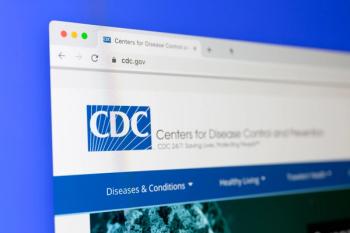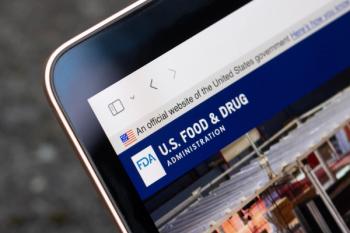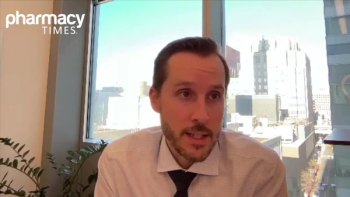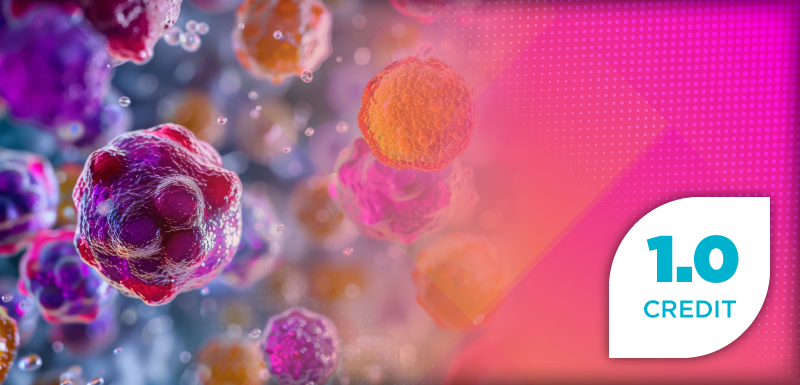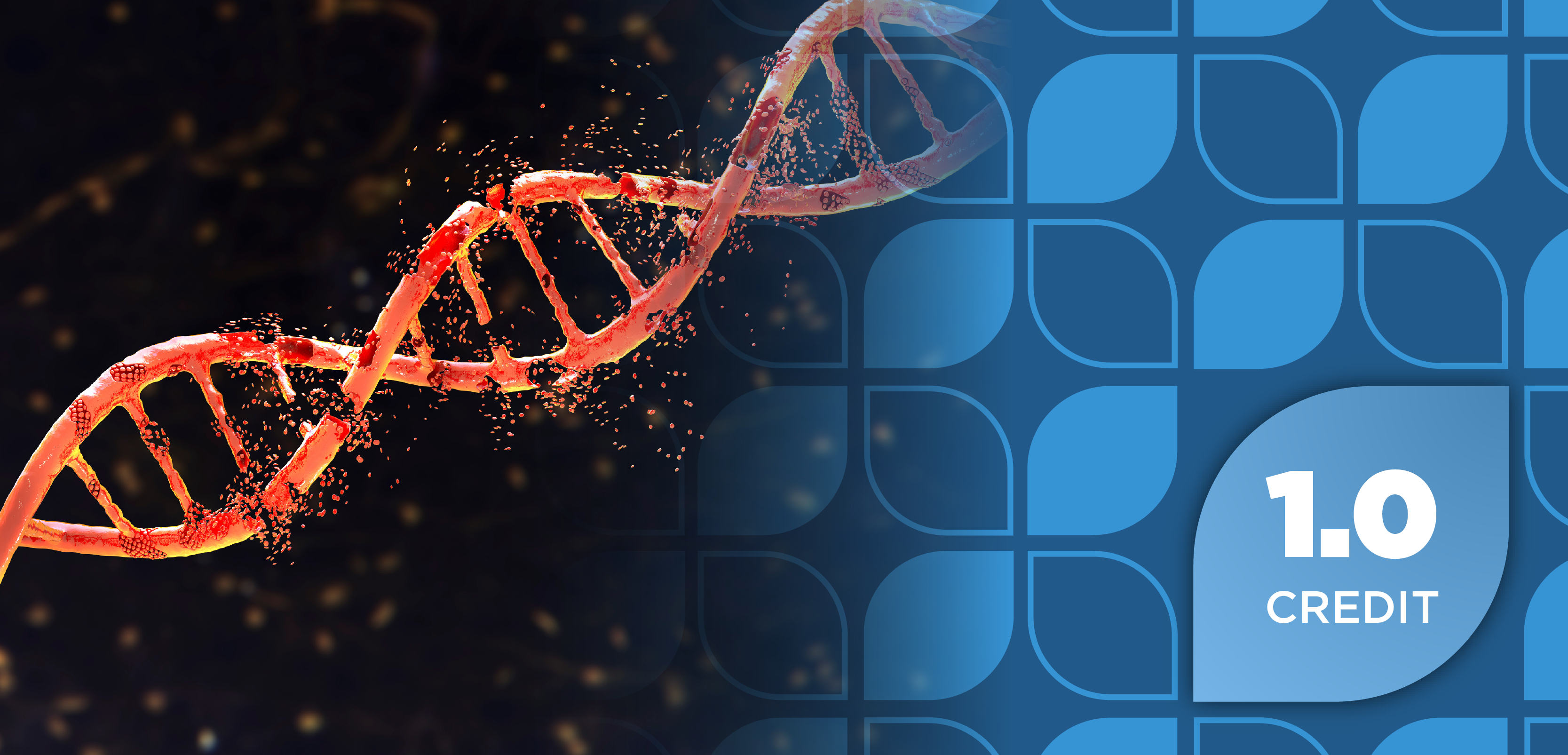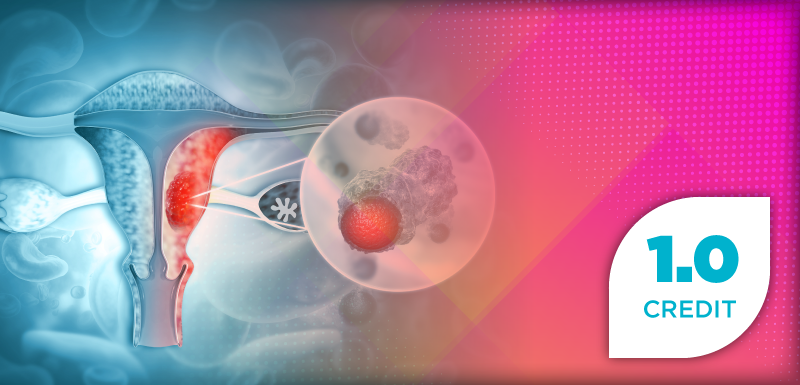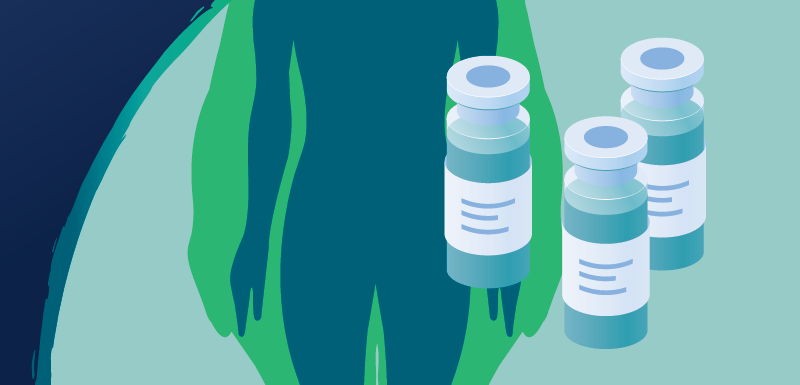Précis
Ongoing lawsuits allege a connection between the human papillomavirus vaccine and severe adverse events, but evidence does not currently support a direct causal relationship. Pharmacists should continue to emphasize the vaccine’s effectiveness in preventing cancer and be prepared to address patient safety concerns.
Abstract
The recombinant human papillomavirus (HPV) vaccine has proven effective in reducing HPV-related cancers. However, public concerns about its safety persist due to adverse event (AE) reports and ongoing lawsuits alleging that it can cause serious AEs, including postural orthostatic tachycardia syndrome and premature ovarian failure, which may deter individuals from receiving this recommended vaccination series. This literature review aimed to synthesize the most current research findings to provide pharmacists and other health care professionals with an evidence-based discussion of the benefits, risks, and barriers to HPV vaccination to assist them in engaging in open dialogues with patients.
Background
The recombinant human papillomavirus (HPV) vaccine has been utilized since 2006 to prevent cancers caused by HPV, a family of more than 200 viruses.1 HPV is one of the most common sexually transmitted infections (STIs) worldwide and the most common STI in the US.1 It is transmitted through intimate skin-to-skin contact (ie, vaginal, penile, anal, or oral sex) with an individual infected with HPV. Because most HPV infections are asymptomatic and resolve spontaneously within 1 or 2 years, individuals may carry and transmit the virus unknowingly.1
However, persistent infection with high-risk HPV types can lead to the development of cervical and other anogenital cancers1; 12 high-risk HPV types have been identified.2 HPV is responsible for 91% of cervical, 91% of anal, 75% of vaginal, 70% of oropharyngeal, 69% of vulvar, and 63% of penile cancers, as well as 90% of genital warts.1
The first-generation HPV quadrivalent recombinant vaccine (HPV4; Gardasil; Merck Sharp & Dohme) was highly effective against 4 types of HPV: types 6 and 11 (low-risk, nononcogenic types that can cause benign cervical abnormalities, anogenital warts, and respiratory papillomas), and types 16 and 18 (high-risk types that together account for approximately 66% of cervical cancers worldwide).1,3 The current formulation, the HPV 9-valent recombinant vaccine (HPV9; Gardasil 9; Merck Sharp & Dohme LLC) was approved by the FDA in 2014 and protects against the same HPV strains as the HPV4 vaccine but also against high-risk types 31, 33, 45, 52, and 58, which are responsible for another 15% of cervical cancers and 11% of all HPV-related cancers.1 A 2015 study by Vesikari et al found that the HPV9 vaccine was both safe and effective in female patients aged 9 to 15 years and offered broader protection against additional high-risk HPV strains compared with the HPV4 vaccine, potentially increasing the coverage of protection from 70% to 90% of cervical cancers.4
The CDC recommends that all children aged 11 to 12 years receive the HPV vaccine, with catch-up vaccination schedules available for individuals aged 13 to 26 years, to protect against HPV infections that can cause cancer later in life.5 The HPV vaccine is not recommended for use during pregnancy.5 The vaccination series consists of 2 doses given 6 to 12 months apart if initiated in individuals before age 15 years and 3 doses (at 0, 1-2, and 6 months apart) for individuals aged 15 to 26 years just starting the series.5 The World Health Organization has also endorsed the HPV vaccine, recognizing it as a “highly effective way to prevent HPV infections, cervical cancer, and other HPV-related cancers.”6
Although the vaccine has been shown to be safe and effective in reducing HPV-related cancers1-4,7-9 and the spread of the virus to unvaccinated individuals,2,5-10 public concerns about its safety persist due to Vaccine Adverse Event Reporting System (VAERS) reports following HPV vaccination and ongoing lawsuits alleging that it can cause serious AEs, including postural orthostatic tachycardia syndrome (POTS) and premature ovarian failure (POF). This literature review aimed to synthesize the most current research to provide pharmacists and other health care professionals with an evidence-based discussion of the benefits, risks, and barriers to HPV vaccination to help them engage in open dialogues with patients.
Benefits of Vaccination
Data show that HPV vaccination significantly reduces the risk of HPV-related cancers. Lei et al conducted a study from 2006 through 2017 of 1,672,983 female patients aged 10 to 30 years who either received the HPV vaccine (n = 527,871) or did not (n = 1,145,112) to assess the association between HPV4 vaccination and the risk of invasive cervical cancer. The investigators found that HPV vaccination was associated with a substantial reduction in the incidence of invasive cervical cancer, with the decrease being more pronounced among those who were vaccinated prior to the age of 17 years.7
Since the HPV vaccine was first approved in the US in 2006, it has led to an 88% decline in HPV infections among adolescent girls and an 81% decline among young adult women.8 Moreover, the percentage of cervical precancers caused by the HPV types most commonly associated with cervical cancer has dropped by 40% among vaccinated women.8 In addition, a study published in 2024 by Baandrup et al investigated HPV vaccine effectiveness against anal high-grade squamous intraepithelial lesion (HSIL) or worse in 968,881 women aged 17 to 32 years. It was found that vaccination at younger than 17 years resulted in a 70% lower likelihood of developing high-grade precancerous lesions or anal HSIL compared with unvaccinated women.9
Although HPV is often associated with cervical cancer, it is a significant cause of various cancers in individuals regardless of their sex, including penile, anal, and oropharyngeal cancers, with high-risk HPV types 16 and 18 contributing to the majority of these malignancies.2
Globally, men account for 40% of HPV-related cancers, yet HPV prevention efforts largely exclude them.11 Nearly 1 in 3 adolescent boys and adult men are infected with HPV, which can present as anogenital warts and HPV-related oral infections.12 All-inclusive HPV vaccination is a necessary step to curb the spread of HPV and reduce its associated disease burden.
Gender-neutral vaccination strategies have been shown to reduce HPV prevalence and related cancers more effectively than strategies focusing exclusively on girls, adolescent girls, and young women. Studies done in Finland and Australia demonstrated that communities adopting gender-neutral vaccination observed a more rapid and substantial decline in vaccine-preventable HPV types compared with communities that vaccinated girls only.13,14 Additionally, a 2021 study of adolescent boys and young men aged 16 to 20 years in Australia demonstrated a 70% reduction in vaccine-preventable HPV genotypes in men who have sex with men following the implementation of an HPV vaccination program.15 Gender-neutral vaccination programs are not only scientifically sound but also essential for achieving global public health goals.16 By moving toward gender-neutral HPV vaccination, we can reduce the incidence of HPV-related cancers.16
It is also important to note that increased HPV vaccination rates overall provide communitywide benefits through herd immunity by lowering overall infection rates and reducing the spread of the virus to unvaccinated individuals.2,5-10
Potential Risks of HPV Vaccination
Although the benefits of the HPV vaccination are well documented, safety concerns may deter an individual from receiving the vaccine.
According to the manufacturer, the safety of the vaccine was evaluated in 7 clinical trials, and the most common AEs of the HPV vaccine include headache, fever, nausea, dizziness, and local injection-site reactions such as pain, swelling, erythema, pruritus, and bruising. Syncope, a temporary loss of consciousness, has been reported after HPV vaccination and has resulted in some individuals falling and sustaining injuries. Additionally, because the HPV vaccine is formulated with yeast, it is contraindicated in any patient with a hypersensitivity to this component.17
Of the 15,705 individuals included in the 7 trials who were administered the vaccine and had safety follow-up, 354 reported a serious AE (2.3% of the population) and 4 of these individuals experienced at least 1 serious AE that was determined to be vaccine-related (ie, pyrexia, allergy to vaccine, asthmatic crisis, or headache). Trial participants were also evaluated for systemic autoimmune disorders, with 2.2% of individuals who received the HPV9 vaccine experiencing new medical conditions potentially indicative of a systemic autoimmune disorder; this was similar to the reported rate following administration of a saline placebo.17
In addition, various postmarketing AEs, such as autoimmune diseases, Guillain-Barré syndrome, and deep vein thrombosis, have been spontaneously reported in those receiving the HPV4 vaccine and, according to the manufacturer, these AEs are relevant to the HPV9 vaccine because both are similarly manufactured and contain the same L1 HPV proteins of 4 of the same HPV types.17
Potential Barriers to HPV Vaccination
As of February 2025, the federal multidistrict litigation (MDL) against the HPV vaccine manufacturer had more than 200 cases pending. MDL is a group of individual lawsuits filed in different districts that make similar allegations against a common defendant that have been consolidated under 1 judge for more efficient handling of discovery and pretrial proceedings. The lawsuits allege that the manufacturer neglected to disclose critical information about the potential risks of the HPV vaccine.18
The most common HPV vaccine AEs alleged in the MDL include POF and POTS. Other alleged AEs include autoimmune disorders, chronic fatigue syndromes, dysautonomia, fibromyalgia, lupus, movement disorders, neurological disorders, chronic pain syndromes (including chronic regional pain syndrome, idiopathic thrombocytopenic purpura, and small fiber neuropathy), cancer development, and death.18,19
POTS after HPV vaccination: What the current literature shows
POTS is a disorder that affects the autonomic nervous system’s ability to regulate blood pressure and heart rate, which can result in dizziness, lightheadedness, or fainting when an individual goes from lying or sitting to standing.20 Between June 2006 and August 2015, VAERS, a national surveillance system designed to monitor the safety of vaccines, received 40,735 reports of POTS following HPV vaccination, which represented 0.4% of all HPV-vaccine–related reports.21 A recent study by Arana et al examined those reports and found that of the 112 cases with sufficient information available, 29 fully met POTS diagnostic criteria.21 Of those, 20 documented a history of preexisting medical conditions, with the most common being chronic fatigue, asthma, and chronic headaches.21 Specific to the US, there were 13 reports—out of 80,138,237 HPV4 vaccine doses distributed in the US during the study period—that fully met POTS diagnostic criteria, equating to approximately 1 POTS report for every 6.5 million HPV vaccine doses distributed.21 The authors concluded that POTS is “rarely reported following HPV vaccination” and that their review “did not detect any unusual or unexpected reporting patterns that would suggest a safety problem.”21
In 2020, Barboi et al conducted a comprehensive literature review to evaluate the potential connection between HPV vaccination and the development of autonomic disorders such as POTS, dysautonomia, chronic fatigue, complex regional pain syndrome, and postural tachycardia syndrome. They reviewed literature on the biology of HPV, pathophysiology of the infection, epidemiology of associated cancers, indications of HPV vaccination, safety surveillance data, and published reports linking HPV vaccination to autonomic disorders. The authors, on behalf of the American Autonomic Society, concluded that “the data do not support a causal relationship between HPV vaccination and [chronic regional pain syndrome], POTS, or other forms of dysautonomia.”22
POF after HPV vaccination: What the current literature shows
POF is a condition in which an individual’s ovaries stop functioning normally before age 40 years and is characterized by amenorrhea, hypogonadotropic hypogonadism, and infertility.23 A 2022 study by Tatang et al examined eligible VAERS reports of POF between July 1990 and May 2018 and found 281 reports (0.1% of total eligible POF reports) in which individuals were exposed to the HPV vaccine, with the incidence of reported POF events increasing parallel to the rise in vaccination rates among young women.24 The study showed that since the launch of the first HPV vaccine in 2006, the mean number of reported POF cases has significantly increased, from 1.4 cases per year before the vaccine launch to 22.2 cases per year after the launch.24 The study also found a proportional reporting ratio of 46.1 (95% CI, 31.7-67.2), indicating a significantly higher reporting rate of POF after the introduction of the HPV vaccine vs the rate of POF reports before the vaccine’s launch.24 The authors concluded that their findings suggest the “presence of a potential safety signal of POF associated with HPV vaccination.”24
However, an earlier study conducted by Naleway et al from 2006 to 2014 did not find a statistically significant increased risk of POF in 199,078 female patients aged 11 to 34 years who were exposed to vaccines, including the HPV vaccine. Of the confirmed 46 POF cases, only 1 patient had received the HPV vaccine before symptom onset. The adjusted HR after HPV vaccination was 0.30 (95% CI, 0.07-1.36), with the authors concluding that they found “no evidence of increased risk of [POF] after HPV vaccination...in this population-based retrospective cohort study.”25
It is important to note that conditions such as POTS and POF indirectly affect reproductive health. During the labor and delivery process, for instance, there’s a rare chance that POTS-induced tachycardia and hemodynamic instability will occur, necessitating expert management by health care professionals.26 More extensive studies are needed to confirm whether there is an increased risk of pregnancy complications due to POTS.26 Regarding POF, the condition is characterized by irregularity in menstrual cycles and insufficient ovarian function, which decrease an individual’s overall ability to become pregnant.23 In addition, the inability to conceive can lead to poor mental health outcomes, including a significantly increased risk of developing anxiety and depression.27
Although statistical signals of POF-related events after HPV vaccination have been detected, these findings indicate a potential association and do not prove causation.24 The CDC and FDA continue to recommend the HPV vaccine, noting that they “have not found any proof that HPV vaccines cause reproductive problems in women, including [POF].”28 Ongoing studies and monitoring are important to further understand the long-term effects of HPV vaccination.
What Can We Do As Pharmacists?
1. Follow CDC recommendations.
The CDC continues to recommend the HPV vaccine for individuals aged 9 to 26 years. Adults aged 27 to 45 years who were not adequately vaccinated during their younger years, have had multiple sexual partners, or are immunocompromised also may want to consider getting the HPV vaccine. However, the vaccination of individuals in this age group provides less benefit because they may have already been exposed to HPV. Completing the full vaccination series is essential for achieving maximum protection against HPV-related cancers and conditions.5
2. Provide patient education.
It is important to acknowledge and address patients’ concerns regarding the vaccine; discuss the current evidence, recommendations, and common AEs; and underscore the benefits of vaccination discussed previously.
The HPV vaccine shares common AEs with many other annual vaccines.28 These AEs are typically mild and temporary, usually resolving within a day or two.28 Common AEs include pain, redness, swelling at the injection site, fever, nausea, headache, tiredness, and muscle or joint pain.17 Although each patient may respond differently to the HPV vaccine, current evidence does not support a causal link between the vaccine and severe conditions such as POTS or POF, as noted previously.21,22,24,25 The FDA also recommends the HPV vaccine to everyone aged 9 to 26 years.5
About the Authors
Caitlyn V. Bradford, PharmD, BCPPS, is a clinical assistant professor of pharmacy practice
in the Department of Pharmacy Practice at the Philadelphia College of Pharmacy at Saint Joseph’s University in Pennsylvania.
Li Yu is a class of 2025 PharmD candidate at the Philadelphia College of Pharmacy at Saint Joseph’s University in Pennsylvania.
Trey McCollum is a class of 2025 PharmD candidate at the Philadelphia College of Pharmacy at Saint Joseph’s University in Pennsylvania.
Danielle M. Alm, PharmD, BCPS, BCPPS, is a clinical associate professor and director of the Continuing Education Program in the Department of Pharmacy Practice at the Philadelphia College of Pharmacy at Saint Joseph’s University in Pennsylvania.
3. Stay current.
Pharmacists should remain vigilant in reviewing emerging literature on the HPV vaccine and stay informed on the status of the ongoing litigation. Being up to date on the latest evidence is crucial for addressing patient concerns, dispelling inaccurate information, and providing informed recommendations.
Conclusion
Given the ongoing litigation regarding the HPV vaccine, pharmacists play a pivotal role in proactively addressing patient concerns through effective communication and education. VAERS provides a method for constant surveillance of AEs following the HPV vaccination process, including reports of POTS, POF, chronic fatigue, pain, and cancer development. At this time, however, more serious AEs such as POTS and POF are not causally linked to the HPV vaccine, whereas the benefits of HPV vaccination in preventing cervical cancer and other HPV-related diseases have been well documented.1-4,7-9,21,22,24,25 The CDC continues to recommend the HPV vaccine to individuals within the recommended age range.5 However, because safety concerns—including worries about potentially serious AEs—may contribute to vaccine hesitancy and deter an individual from receiving the HPV vaccine, it is advisable for pharmacists and other health care providers to engage in open dialogues with patients about HPV vaccination to ensure that they are informed and that their concerns are addressed.
REFERENCES
CDC. Chapter 11: Human papillomavirus. In: Hall E, Wodi AP, Hamborsky J, Morelli V, Schillie S, eds. Epidemiology and Prevention of Vaccine-Preventable Diseases. 14th ed. Public Health Foundation; 2021:165-176. Accessed January 9, 2025. https://www.merle-arbeitsmedizin.de/wp-content/uploads/2022/02/CDC-Pink-Book-Version-14th-Edition.pdf
HPV and cancer. National Cancer Institute. Updated January 31, 2025. Accessed March 5, 2025. https://www.cancer.gov/about-cancer/causes-prevention/risk/infectious-agents/hpv-and-cancer#:~:text=Key%20facts%20about%20the%20efficacy%20and%20safety,to%20girls%20and%20boys%20at%20ages%209%E2%80%9312
Reisinger KS, Block SL, Lazcano-Ponce E, et al. Safety and persistent immunogenicity of a quadrivalent human papillomavirus types 6, 11, 16, 18 L1 virus-like particle vaccine in preadolescents and adolescents: a randomized controlled trial. Pediatr Infect Dis J. 2007;26(3):201-209. doi:10.1097/01.inf.0000253970.29190.5a
Vesikari T, Brodszki N, van Damme P, et al. A randomized, double-blind, phase III study of the immunogenicity and safety of a 9-valent human papillomavirus L1 virus-like particle vaccine (V503) versus Gardasil in 9-15-year-old girls. Pediatr Infect Dis J. 2015;34(9):992-998. doi:10.1097/INF.0000000000000773
Cervical cancer. World Health Organization. March 5, 2024. Accessed January 10, 2025. https://www.who.int/news-room/fact-sheets/detail/cervical-cancer#:~:text=Being%20vaccinated%20at%20age%209,in%20men%20caused%20by%20HPV
Lei J, Ploner A, Elfström KM, et al. HPV vaccination and the risk of invasive cervical cancer. N Engl J Med. 2020;383(14):1340-1348. doi:10.1056/NEJMoa1917338
Baandrup L, Maltesen T, Dehlendorff C, Kjaer SK. Human papillomavirus vaccination and anal high-grade precancerous lesions and cancer-a real-world effectiveness study. J Natl Cancer Inst. 2024;116(2):283-287. doi:10.1093/jnci/djad189
HPV vaccine safety and effectiveness data. CDC. July 9, 2024. Accessed January 10, 2025. https://www.cdc.gov/hpv/hcp/vaccination-considerations/safety-and-effectiveness-data.html#:~:text=Cervical%20precancers%20*%20Compared%20to%202008%E2%80%932009%2C%20cervical,in%2018%E2%80%9320%2Dyear%2Dolds%20and%2036%%20lower%20in%2021%E2%80%9324%2Dyear%2Dolds.&text=*%20The%20percentage%20of%20cervical%20lesions%20due,in%20vaccinated%20women%20since%20vaccines%20were%20introduced
Cancers caused by HPV. CDC. March 3, 2025. Accessed April 7, 2025. https://www.cdc.gov/hpv/about/cancers-caused-by-hpv.html#:~:text=About%204%20out%20of%20every,get%20cancers%20caused%20by%20HPV.
de Martel C, Plummer M, Vignat J, Franceschi S. Worldwide burden of cancer attributable to HPV by site, country and HPV type. Int J Cancer. 2017;141(4):664-670. doi:10.1002/ijc.30716
Lehtinen M, Apter D, Eriksson T, et al. Effectiveness of various human papillomavirus vaccination strategies: a community randomized trial in Finland. Cancer Med. 2021;10(21):7759-7771. doi:10.1002/cam4.4299
Patel C, Brotherton JM, Pillsbury A, et al. The impact of 10 years of human papillomavirus (HPV) vaccination in Australia: what additional disease burden will a nonavalent vaccine prevent? Euro Surveill. 2018;23(41):1700737. doi:10.2807/1560-7917.ES.2018.23.41.1700737
Chow EPF, Tabrizi SN, Fairley CK, et al. Prevalence of human papillomavirus in young men who have sex with men after the implementation of gender-neutral HPV vaccination: a repeated cross-sectional study. Lancet Infect Dis. 2021;21(10):1448-1457. doi:10.1016/S1473-3099(20)30687-3
Naidoo D, Govender K, Mantell JE. Breaking barriers: why including boys and men is key to HPV prevention. BMC Med. 2024;22(1):525. doi:10.1186/s12916-024-03701-8
Gardasil 9. Prescribing information. Merck Sharp & Dohme LLC; 2024. Accessed August 14, 2024. https://www.merck.com/product/usa/pi_circulars/g/gardasil_9/gardasil_9_pi.pdf
Gardasil lawsuit. Wisner Baum. February 2025. Accessed March 5, 2025. https://www.wisnerbaum.com/prescription-drugs/gardasil-lawsuit/#~f5e26fd6-1e6a-492c-af7e-6015760c0596
Miller RV Jr. Gardasil HPV vaccine lawsuit. Lawsuit Information Center. February 19, 2025. Accessed March 5, 2025. https://www.lawsuit-information-center.com/gardasil-hpv-vaccine-lawsuit.html
Postural tachycardia syndrome (POTS). National Institute of Neurological Disorders and Stroke. Updated February 13, 2025. Accessed March 5, 2025. https://www.ninds.nih.gov/health-information/disorders/postural-tachycardia-syndrome-pots
Arana J, Mba-Jonas A, Jankosky C, et al. Reports of postural orthostatic tachycardia syndrome after human papillomavirus vaccination in the Vaccine Adverse Event Reporting System. J Adolesc Health. 2017;61(5):577-582. doi:10.1016/j.jadohealth.2017.08.004
Barboi A, Gibbons CH, Axelrod F, et al; American Autonomic Society. Human papillomavirus (HPV) vaccine and autonomic disorders: a position statement from the American Autonomic Society. Clin Auton Res. 2020;30(1):13-18. doi:10.1007/s10286-019-00608-w
Jankowska K. Premature ovarian failure. Prz Menopauzalny. 2017;16(2):51-56. doi:10.5114/pm.2017.68592
Tatang C, Arredondo Bisonó T, Bergamasco A, Salvo F, Costa Clemens SA, Moride Y. Human papillomavirus vaccination and premature ovarian failure: a disproportionality analysis using the Vaccine Adverse Event Reporting System. Drugs Real World Outcomes. 2022;9(1):79-90. doi:10.1007/s40801-021-00271-6
Naleway AL, Mittendorf KF, Irving SA, et al. Primary ovarian insufficiency and adolescent vaccination. Pediatrics. 2018;142(3):e201180943. doi:10.1542/peds.2018-0943
Morgan K, Smith A, Blitshteyn S. POTS and pregnancy: a review of literature and recommendations for evaluation and treatment. Int J Womens Health. 2022;14:1831-1847. doi:10.2147/IJWH.S366667
Xi D, Chen B, Tao H, Xu Y, Chen G. The risk of depressive and anxiety symptoms in women with premature ovarian insufficiency: a systematic review and meta-analysis. Arch Womens Ment Health. 2023;26(1):1-10. doi:10.1007/s00737-022-01289-7
Human papillomavirus (HPV) vaccine safety. CDC. March 6, 2025. Accessed March 11, 2025. https://www.cdc.gov/vaccine-safety/vaccines/hpv.html
The authors have nothing to disclose.

